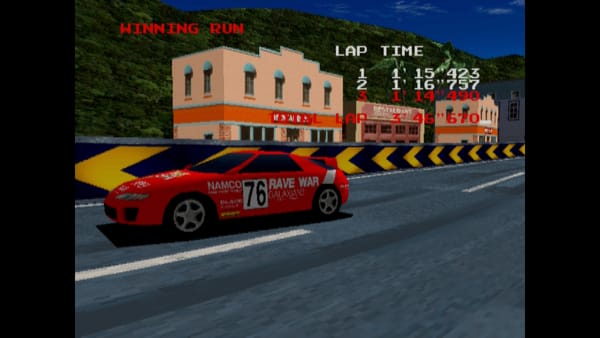Egret II Mini Review 1/2: The hardware
Superior, uncompromising retro toy made by and for maniac fans, with a price tag to match

When I looked at the Astro City Mini, I thought it was about as far as the “toy arcade cabinet” idea could reasonably be expected to go for $140.
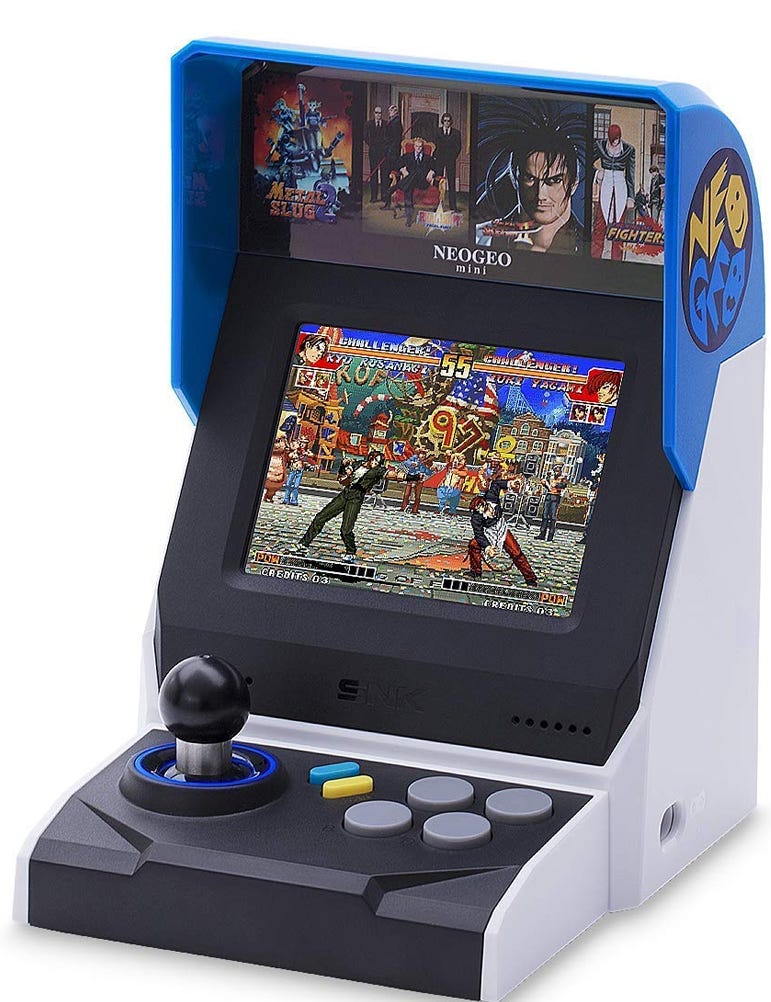
Consider the evolution of the concept: SNK put out the Neo Geo Mini for about $100 a while back. The parts and the screen weren’t bad, but it was just way too small to reasonably expect to play. You couldn’t see the bullets in the shooting games, and trying the special moves in the fighting games might break your fingers.1 The device was firmly a novelty, strictly for shelf display.
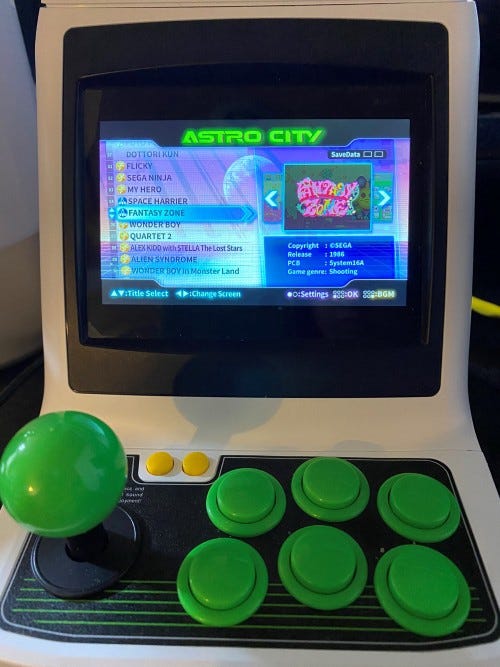
Sega took the concept more seriously, envisioning their Mini as a device that people would not just look at but actually play extensively. The Astro’s large size and high-quality parts made the difference. Unlike other toy cabinets, you can sit down with the Astro City Mini and let the games take you away for a little while without having to squint or think about where your fingers are.
There were still issues with the size— particularly the terrible choice of a 16:9 wide screen for a bunch of 4:3 games2— but it felt like the only way to improve much further on the Astro City Mini’s hardware was to move up into a different price bracket.
And this is exactly what Taito has done with the Egret II Mini, which takes aim at the Astro City Mini and blows it out of the water in every conceivable department. A totally uncompromising project, the Egret II Mini has every imaginable feature of the perfect toy arcade cabinet short of shoving a MISTer in there. The uncompromising price, however, is $200 for the base unit, with $250 in accessories. Whether you’ll want the accessories depends on how uncompromising you are.
The real Egret II
Like the Astro, the Egret II Mini is based upon a real-life Japanese generic arcade cabinet, the Egret II. The likely best arcade machine of its era, the Egret II is known for having a high-quality monitor which is relatively easy to rotate from horizontal to vertical position. This ease of use makes it quite sought after by home users, especially shooting enthusiasts.

If you’ve been to Akihabara’s retro and Taito heaven HEY, the shooting game floor has a small army of Egret IIs playing the likes of Dodonpachi and Tatsujin Oh on vertical CRT monitors in all their glorious splendor.
The Astro City is the omnipresent workhorse of Japanese generic cabs: it’s plentiful, it’s relatively cheap, and it will treat you well.3
By comparison, though, the Egret II is the pinnacle of its era. It is likely that the designers at Taito had this in mind when they sought to exceed the Astro City Mini.
The unit
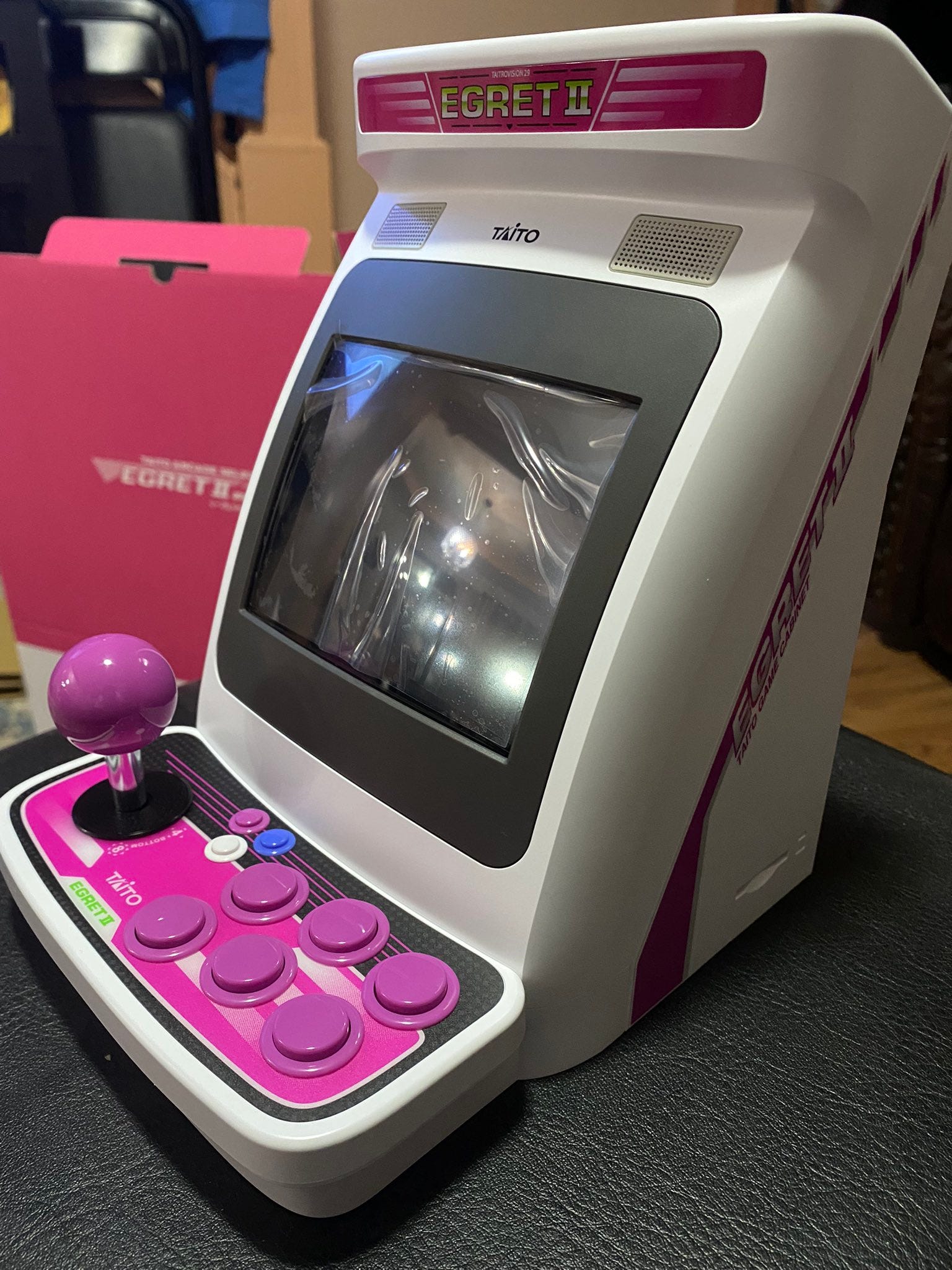
When I got my Astro City Mini, I was shocked by the size of the thing, and pretty sure that nobody would ever be so crazy as to put out a mini-arcade bigger than it. I was wrong: the Egret II Mini outright dwarfs its competitor. The body is gigantic, almost exceeding the proportions at which we could still call this a “desktop toy.”
Like the Astro, the Egret II Mini uses real arcade parts in a smaller form factor than its original. That means a traditional “click” stick and six firm, clicky buttons.
But the Egret has a much wider, more comfortable panel than the Astro, which was playable but certainly cramped. If you take a close look, you’ll notice that the control panel actually bulges out from the sides a bit to give the player more hand room. While not quite full arcade size, the Egret’s joystick is about 2/3rds of the way; you can handle it like you would a full-size arcade stick.
I am a big guy with big hands, so I’m surprised to be comfortable with this Mini’s controls. A lot of the games on the mini are “arcade hard”, and thus demand quality, consistent controls. Though it’s currently on my desktop next to my TV, I’ve spent most of my time with the Mini playing off the machine itself. Sometimes my fingers brush the bulging front of the machine when I hit “up,” and I feel kind of self-conscious. That’s about it for problems.
In one of many obsessive arcade details, you can turn a dial under the stick to change the standard 8-direction stick to a 4-direction stick for early games like Space Invaders that don’t use diagonals. As we’ll see, Taito is committed to getting the feel right.
Screen

As with its namesake, the exceptional point of the Egret II Mini is the screen. Games fill the generous 5-inch 4:3 display and you will never have to stress to see the action on screen, not even to see the tiny bullets in a shooting game. 4
(Flipping the screen on an Egret II Mini versus the original)
The Mini even replicates the Egret’s signature screen flip. Instead of opening up the front panel and manually turning the CRT inside, you simply push down on the edges of the screen, let the whole “monitor” pop out, turn it, and press it back in. The games change between horizontal and vertical screen modes automatically, with letterboxing if you’re using the “wrong” mode.

This is definitely the “wow” point of the Mini. Turning the screen opens up the machine, and you can see the mechanism behind the rotation. This feels as sturdy as the control parts: an integral part of the machine, not some afterthought.
Having a vertical screen for shooters is a special treat: you typically don’t get to see that outside of a real arcade. Even on the relatively tiny screen of the Mini, you’re seeing Rayforce as it was intended to be seen.
However, this is a modern screen and the games are displayed in their raw pixels: there’s no scanline filter or other options to emulate an old TV5 as you can see on many modern retro ports or a MISTer. The only visual option you get is a very light pixel smoothing option which you should nevertheless probably turn off immediately.
Audio
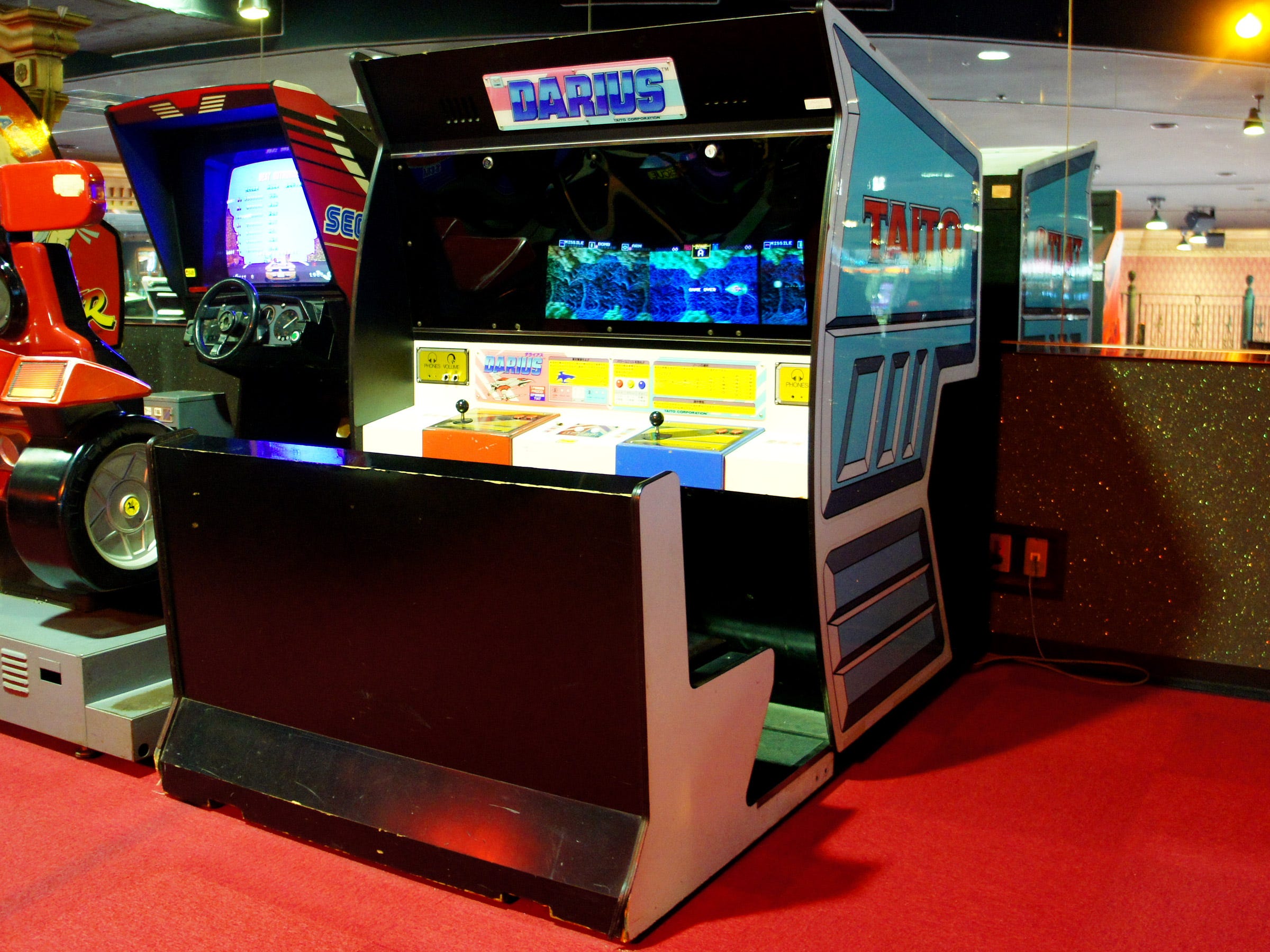
In Japan, I once had the pleasure of being completely alone on the retro floor of the (departed) TRY Tower arcade, sitting in the booth cabinet for the classic shooter Darius and playing through with headphones. I had never really noticed just how impressive the sound design in Taito’s games was until that moment. I was genuinely transported.
Taito is proud of what they’ve got, so the Egret II Mini doesn’t skimp on this element either. The machine has some surprisingly good speakers given its price, so go ahead and crank the volume for some arcade ambience. Using my home stereo system with the Egret took me right back to the arcade. Whether it’s immersive sound design or just catchy, quirky music, Taito really understood the value of audio in their games.
(If you get a bundle, the Mini comes with a 4-CD set from Taito’s in-house band, Zuntata.)
Miscellaneous: cherries on top
Though they’re generic, these cabinets have their own personalities that arcade fanatics love. Part of that is the light-up marquee, and even here the Egret upstages the Astro.

Look at this bright LED-lit marquee. Just gorgeous. Viva Taitrovision. I realize maybe this doesn’t do anything for you if you don’t love arcade games, but my heart soars. Stuff like this is a pretty good litmus test of whether you’d want to buy one of these.
Above the marquee we have the second marquee that holds an instruction/advertising sheet for the particular game in the cabinet. This is the Japanese equivalent of the game-specific marquee on an American cabinet.
The marquee is a hollow plastic piece; you drop the card for the game of your choice into the top and can swap them out whenever you like. It’s gently lit by the same LED that lights up the first marquee. It might be a first production run thing, but my Mini came with a full deck of marquee cards for every single game in the lineup. Opting to represent cute, I went with Kiki Kaikai.
For next time
As you can see, just talking about the hardware brought us to 1500 words. I don’t like to give my readers more than they can easily digest, so I’m splitting up this review into two parts. Part two is an overview of the game library and a review of the substantial accessories. Read it now, if you want!
For a while I practiced KOF2002 combos on the Neo Geo Mini before bed, just to see if I could do them. It was technically possible, but I don’t recommend the experience ↩
I’m retroactively ashamed I didn’t bring this up in my review ↩
I have— I wouldn’t quite say “own”— an Astro City due to a good friend, to whom I am eternally grateful, leaving one of his on my doorstep. Though I call it “cheap”, we’re still talking about a grand or so here; I wouldn’t have been able to buy it myself. ↩
Early arcade games ran in many different resolutions, so you will see small black bars for some games to maintain aspect ratio. ↩
The reason you would want this is that many old games’ art was designed with consumer televisions in mind, not computer monitors or modern HD sets. Artists used the blurring and blending to create effects that aren’t visible from the raw pixels. For a visual demonstration, see CRTPixels on Twitter. ↩
